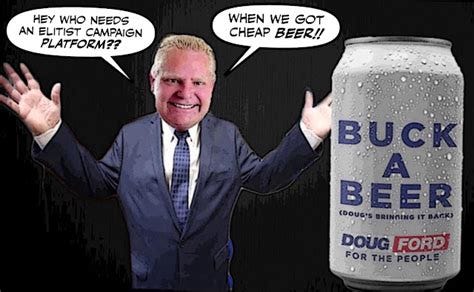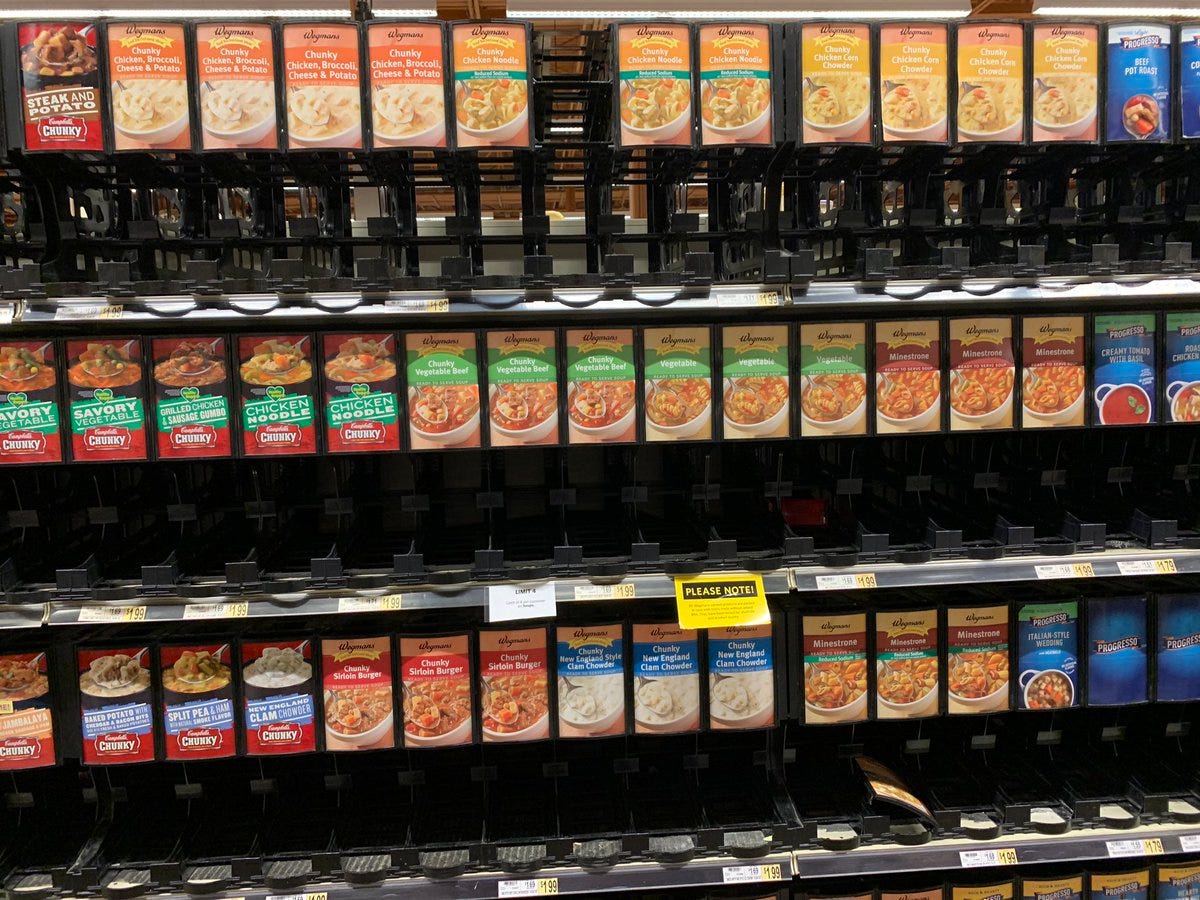A Tariff You and Fido Will Feel Sooner Than Later
Not all steel and aluminum tariffs are created equal. Trump's 25% tariff also includes tin-plate food cans for humans and pets, which he should have exempted.
I’ve never been a fan of tariffs. They’re taxes. They’re a government-imposed cost of doing business. And as with all production costs, they are ultimately passed on to the final consumer. That would be you. It’s Econ 101, a fact of life that no politician can spin otherwise, neither Barack Obama nor Donald Trump.
In most cases, it is not true that the manufacturer or distributor eats the tariff, at least in the long term. Any exceptions are temporary, at best. Host governments sometimes subsidize those exporters for a while as tariffs are negotiated.
Oh, sure, tariffs have their purpose. Some countries cheat or have unfair advantages. China comes to mind. Since the Communist Chinese government controls the means of production and the costs of labor - they’re a Communist country, after all - they subsidize the hell out nearly everything they make. They have no labor unions and pathetic or largely unenforced safety and quality standards, as we should all know by now. Just ask a few thousand former pet owners in the US. The government owns the lands on which they build the factories and pay peanut wages or employ slave labor to make the cheap products you see on the Chinese version of Amazon, Temu.com.
Some countries devalue their currencies to give them another advantage. Others, like Canada, harvest lumber more cheaply than we do on “Crown” lands - a government subsidy. That’s why softwood lumber disputes are perhaps the longest-running trade dispute in North America. Look in the unfinished part of your basement or attic and see if you can find where the lumber comes from. My home, built 11 years ago, has trusses and joists manufactured by Weyerhauser, with timber and finishing mills in Canada and the US. There’s a good chance the two-by-fours, the joists, and the trusses contain timber from both countries.
And then there are the countries—I'm looking at you, again, Canada—that engage in all manner of protectionism for their manufacturers and farmers while demanding unfettered access to the US market. Just ask your favorite dairy farmer or vegetable soup processor. It’s damn near impossible to export either from the US to Canada. Canada employs cartels to protect their vegetable farmers from having to “negotiate” directly with Big Food, which would be a violation of our anti-trust laws in the US.
And that’s our country’s greatest strength and leverage over the world - access to our $20 trillion economy. We’re just 5 percent of the world’s population but earn 20 percent of its income, and we spend it. Can you remember the last time we didn’t run a trade deficit? I can’t. We’re still debating whether it matters or not. Americans can be forgiven for believing we’ve tied both hands behind our backs while competing with other economies. Donald Trump certainly feels that way.
Tariffs can be a terrific negotiating tool. During the first days of his presidency, Trump proved this with our neighbors, Mexico and Canada, over growing illegal immigration and illicit drugs (e.g., fentanyl) that neither country is doing much to stop. They stand to lose a lot more from tariffs than we do, despite the wailing and thrashing about by blowhard politicians in Canada, such as the populist “Conservative” Premier of Ontario, “Buck a Beer” Doug Ford.
After taking all US-made alcohol from Ontario’s government-run liquor stores - before putting them back - Ford called for snap elections for his large province in about two weeks (February 27th) to seize on the Trump tariffs and get ahead of federal elections north of the 49th parallel, which will take place no later than October. He doesn’t want to tie his political fortunes to real Conservative Pierre Poilievre, who he clearly doesn’t like but still leads in most polling to become Prime Minister of Canada.
In the meantime, the style-over-substance Canadian voter will likely have Great Britain-Canada dual citizen Mark Carney—former head of both the Banks of Canada and Great Britain—as their forthcoming, if temporary Prime Minister following the resignation of the execrable Justin Trudeau. For left-of-center Canadians, the mature, unexcitable, and erudite Carney is central casting’s idea of a Prime Minister, the perfect antidote to the excitable and emotionally stunted Trudeau. Never mind Carney’s disastrous economic legacies in both countries of allegiance as an architect of Canada’s and England’s financial decline.
Side note: Can you imagine having a dual citizen as President of the United States? Me neither. But we’re talking about Canada, which does everything it can to embrace its Mother Country over any cultural affinity with the United States (Quebec has other thoughts). The closest we’ve come in recent years is US Senator Ted Cruz (R-TX), runner-up to Donald Trump for the 2016 GOP nomination. He was born to a Cuban-born father and an American mother in Calgary, Alberta. When it was unveiled that he may be a dual citizen running up to the 2016 campaign, a fact that he appeared unaware of, he renounced his Canadian citizenship with lightning speed.
There may be a valid rationale for Donald Trump's 25% across-the-board steel and aluminum tariffs imposed on Monday. He thinks so. But not all steel is created equal.
The next time you’re out and about, guess where you’ll likely find the most extensive steel collection outside the parking lot?
The grocery store, especially the “shelf-stable” center aisles where the canned and other packaged (glass, plastic, aluminum, and paper) food products reside.
Canning (steel and glass) is still the most significant innovation in the food world over the past three centuries. It began when Napoleon promised a prize of 12,000 francs in 1795 to the first person who could devise a food preservation system for his army, which, as we know, marched on its stomach. It took 14 years, but Nicholas Appert collected his prize in 1809 by creating a system of sterilizing food, which is what canning is all about.
To be sure, the canned food industry has innovated over the years. Cans are stronger and no longer made with lead soldering, and innovative vinyl and ceramics now protect the tin-plated steel from touching the food, replacing wood resins and hormone-disrupting epoxies of the recent past. Can makers have found terrific ways to make food cans with no seams and, in most cases, innovative lids that make it easier to open them without harming food integrity. The days of swollen, imperfect cans bulging from botulism are long gone.
And do you know how long canned foods can be safely consumed? Food makers will attest that the shelf life of canned foods is two years, but that’s a quality measure, not a safety issue. Most canned foods will last way longer than that, even as vegetables might get a little mushy over a decade or two.
Another side note: Some falsely think that canned foods contain preservatives. Not true. Salt is sometimes added for taste, but the canning process is sufficient; it needs no other preservatives.
Canning works like this: Foods like soups, vegetables, chilis, and sauces are prepped in advance. When mixed and placed in cans, they are often not cooked (tomato soup is an exception since cooking tomatoes produces lycopene, a powerful antioxidant that helps prevent prostate cancer). Instead, they are cooked in cans, in rotary or hydrostatic cookers (some dating back to the 1930s), depending on the time necessary to eliminate pathogens. For example, chicken noodle soup takes less time than beef chili and beans or many creamed soups because they’re often pre-cooked.
Canned foods are the safest part of the food supply and are remarkably affordable. Cans are recyclable. I usually get a can of my favorite soup, Campbell’s Chunky Split Pea and Ham, for under $3, and often less. It's a very inexpensive, healthy, and satisfying meal. You rarely hear of anyone getting sick from consuming canned foods unless they were mislabeled as failing to include an allergen. And there are lower sodium varieties for those concerned about that.
That’s why a few “food preppers” like me have an ample supply of canned foods.
And while the price of my favorite soup is unlikely to go up in the near term, companies like Campbell Soup, General Mills, Bush’s Beans, Del Monte, and others are likely to work through their ample can inventories from Silgan, Crown Cork and Seal, and other packagers. Companies began moving away from “just in time” deliveries in recent years, thanks in part to the pandemic, and some companies have can manufacturing plants attached to their facilities. They also have large warehouses.
And where are these cans and foods primarily produced? Trump country, for starters, in rural places like northwest Ohio, western and central Pennsylvania, Missouri, southeast North Carolina, and northeast Texas. Most canned foods are made in bright red rural areas by blue-collar workers who are often union members (United Food and Commercial Workers and Teamsters).
But the steel to make those cans has to come from somewhere.
Here are some facts. US steelmakers don’t care much about tin plate steel, which is uniquely used to make food products. It’s not profitable enough for them. They prefer sheet metal and other steel used for vehicles and other products. So, the steel comes from different places, including Canada. The Netherlands. Mexico. China. And elsewhere.
Here’s another dirty little secret. US tin plate steel is not the same quality as most of its foreign competitors, except China, which is worse.
Only a week ago, can makers and many of their customers wrote to the President asking for an exemption from tariffs for tin-plate steel. They’ve been fighting tariffs for years, starting in 2018 and continuing during the Biden Administration. Here’s their argument (emphasis added):
Our industry has seen firsthand the unintended consequences of Section 232 tariffs, quotas, and tariff rate quotas (TRQs) on tin mill steel, used in producing nearly 19 billion metal cans domestically. Contrary to the intent of Section 232 national security tariffs, U.S. steelmakers have shut down nine tin mill lines since the 2018 imposition of Section 232; only three domestic production lines remain today. Tin mill steel is a niche substrate, and its production makes up less than 1% of total steel production. The domestic supply squeeze of tin mill steel precipitated exponential price hikes and inflated the cost of canned foods for American consumers. While it is essential for making steel food cans it is not used in infrastructure projects, construction or for national defense.
As a result, our industry has become more dependent on foreign steel imports due to the severe curtailment of U.S. tinplate steel production, which has forced us to buy steel from allied countries. Today we must import at least 70% of our tin mill steel needs to make the cans necessary to feed the 330 million Americans who rely daily on our products. Sourcing imported tin mill steel is extremely challenging today as 232 tariffs, quotas, and TRQs create supply and delivery impediments that may curtail manufacturing production and the idling of skilled, highly paid American workers. The hundreds of 232 exclusions granted by the Commerce Department and a recent ITC bipartisan, unanimous ruling affirm that tin mill imports do not hurt U.S. steel makers.
It’s not just Del Monte canned vegetables, ConAgra’s Rotel, or Campbell Chicken Noodle Soup that will be hit. Seven million cans of pet food are made yearly, so Fido and Bella may also need to go on a diet. Or, you’ll be switching products. Purina or Dr. Marty’s Pet Foods will be happy to accommodate you.
Here are the consequences that greedy US steel makers and their unions must consider. Food companies may be heavily invested in the canning process now. Still, many have already begun to move to microwavable plastics, pouches, and other forms of packaging that are more prevalent in different countries. Younger consumers aren’t fans of stodgy-looking cans, and pouches are popular in Asia and elsewhere. Food makers have alternatives, and they’re likely to begin pursuing them.
Meaning that domestic steel makers will get little to no benefit from taxing canned food makers through ill-advised tariffs. I’ll grant that tariffs can produce innovations away from tariffs.
But we’ll lose out on the safety and efficacy of the greatest food safety and preservation method of the last three centuries. Stupid government policies have consequences, and Donald Trump got this one wrong, at least partly.
I’m betting—hoping—that his steel and aluminum tariffs are modified, if not abolished, sooner rather than later.
Your canned food prices won’t go up immediately. You can thank inventory and supply chains for that. But if the tariffs persist, higher prices will occur around this fall’s elections in New Jersey, Virginia, and elsewhere, if not sooner. Trump’s tariff policies will hit you harder than his otherwise excellent energy and other regulatory policies, which may take longer to work through our economy.











Great article. Another example of using your professional expertise to highlight government action's intended and unintended consequences.
I think we will be better able to take the moral high ground on supply managed commodities in Canada when we get rid of the U.S. sugar program (which is supply management by any other name).